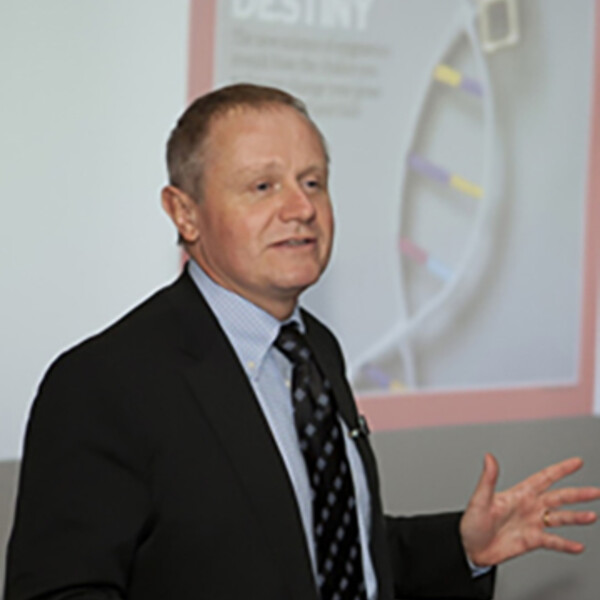Philip Marsden
MD, University of Toronto

Research Synopsis
Regulation of gene expression in endothelial cells
Current work in our lab focuses upon newer aspects of the transcriptional and post-transcriptional regulation of endothelial gene expression in health and disease. Exciting new information indicates that chromatin structure and DNA methylation play a key role in the cell-restricted expression of important endothelial genes. Furthermore, RNA binding proteins and antisense RNA interactions also play an unexpected role in regulation of endothelial gene expression, in part, through the modulation of RNA stability and translational efficiency. We suspect that these pathways may involve RNA interference. Epigenetic pathways and RNA interference are newer concepts in the regulation of genes in the cardiovascular system.
Models of endothelial activation
The study of endothelial cells has provided unique insight into important cardiovascular diseases and the control of angiogenesis during tumour development. The control of new blood vessel formation, or angiogenesis, is orchestrated by vascular endothelium and endothelial cells respond to unique signals in their environment with a repertoire of cellular and molecular responses. Studies directed towards dissecting the molecular mechanisms underlying alterations in genotype and phenotype are underway using prototypic endothelial cell gene products (e.g. endothelin-1, eNOS, CXCR4, adhesion molecules such as VCAM-1 or ICAM-1) and exciting models of cellular activation (hypoxia, shear stress and epigenetic modifiers). An excellent example of the applicability of this approach is our finding that shigatoxins, bacterial-derived exotoxins that cause severe inflammation of capillary beds in patients with E coli 0157:H7, regulate the expression of genes in vascular endothelium at the post-transcriptional level. Also, our most recent identification of a VEGF-A-responsive large intergenic RNA(lincRNA), that we termed lincRNA-VEGFR1 (LIVE1), is a key mediator of angiogenesis in a glioblastoma xenograft model and demonstrates the exciting potential of lincRNA-based therapeutics.
Regulated expression of nitric oxide (NO) in vascular tissue
Release of NO from the vascular endothelium represents a sensitive and highly effective local system for maintaining local blood flow to an organ. This research program played a major role in the cloning and functional characterization of endothelial NO synthase (eNOS) cDNAs and in the demonstration that expression of this endothelial gene is perturbed in atherosclerosis. Recent studies seek to define the structure and organization of the eNOS gene and examine mechanisms of regulation that are relevant to the pathobiology of endothelial cells. Current work focuses upon newer aspects of the transcriptional and post-transcriptional regulation of eNOS mRNA in development and disease
Contribution of epigenetic pathways to the regulated expression of the human NO synthase genes
Evidence has established a major role for the endogenous production of NO as a messenger molecule in at least three major systems. Neuronal, inducible, and endothelial NO synthases are the products of separate human genes. The structural organization and chromosomal localization of the human genes has been determined and their potential contribution to inherited human disease proposed. As an example, we have demonstrated genetic linkage between an intragenic nNOS marker locus and a disease locus implicated in human pyloric stenosis. The structural organization of the human nNOS gene was therefore defined. This gene has remarkable 5’-mRNA diversity possessing at least eleven independent examples of exon 1. Unique 5’-flanking regions control transcription initiation in a cell-specific fashion. Furthermore, leader 5’-UTR sequences of nNOS mRNA variants contribute to the control of translation and subcellular RNA localization. Hypoxia induces a unique nNOS mRNA species in vascular smooth muscle cells. How are these processes controlled at the level of the RNA?
Recent Publications
- Fish, J.E., Matouk, C.C., Yeboah, E., Bevan, S.C., Khan, M., Patil, K., Ohh, M, Marsden, P.A. Hypoxia-inducible expression of a natural cis-antisense transcript inhibits endothelial nitric-oxide synthase. J Biol Chem, 2 82(21):15652-66, 2007
- Matouk, C.C., Marsden, P.A. Epigenetic regulation of vascular endothelial gene expression, Circ Res, 102:873-887, 2008
- Teichert, A.M., Scott, J.A., Robb, G.B, Zhou, Y.Q., Zhu, S., Lem, M., Keightley, A., Steer, B. M., Schuh, A. C., Adamson, S. L., Cybulsky, M. I., Marsden, P.A. Endothelial nitric oxide synthase (eNOS) gene expression during murine embryogenesis: commencement of expression occurs with the establishment of a unidirectional circulatory system. Circ Res 103: 24-33, 2008
- Fish, J.E., Yan, M.S., Matouk, C.C., St. Bernard, R., Ho, J.D.Jr., Gavryushova, A., Srivastava, D., Marsden, P.A. Hypoxic repression of endothelial nitric-oxide synthase transcription is coupled with eviction of promoter histones. J Biol Chem , 285:810-26, 2010
- Yan, M.S., Matouk, C.C., Marsden, P.A. Epigenetics of the vascular endothelium. J Appl Physiol. 109:916-926, 2010
- Shirodkar, A.V., Marsden, P.A. Epigenetics in cardiovascular disease. Curr Opin Cardiol. 26:209-15, 2011
- Petruzziello-Pellegrini, T.N., Yuen, D.A., Page, A.V., Patel, S., Soltyk, A.M., Matouk, C.C., Wong, D.K., Turgeon, P.J., Fish, J.E., Ho, J.J.D., Steer, B.M., Khajoee, V., Tigdi, J., Lee, W.L., Motto, D.G., Advani, A., Gilbert, R.E., Karumanchi, S.A., Robinson, L.A., Tarr, P.I., Liles, W.C., Brunton, J.L., The CXCR4/CXCR7/SDF-1 pathway contributes to the pathogenesis of shiga toxin-associated hemolytic syndrome in humans and mice. J. Clin. Invest . 122:759-76, 2012
- Ho, J.J., Metcalf, J.L., Yan, M.S., Turgeon, P.J., Wang, J.J., Chalsev, M., Petruzziello-Pellegrini, T.N., He, J.Z., Dhamko, H., Man, H.S., Robb, G.B., Teh, B.T., Ohh, M., Marsden, P.A. Functional importance of dicer protein in the adaptive cellular response to hypoxia. J Biol Chem 287:29003-20, Epub June 28, 2012
- Shirodkar, A.V., St. Bernard, Gavryushova, A., Kop, A. Knight, B.J., Yan, M.S., Man, H.S.J., Sud, M., Hebbel, R.P., Oettgen, P., Aird, W.C., Marsden, P.A. A mechanistic role for DNA methylation in endothelial cell (EC)-enriched gene expression: relationship with DNA replication timing. Blood. 121: 3531-3540, 2013
- Ho, J.J.D., Robb, G.B., Tai, S.C., Turgeon, P.J., Mawji, I.A., Man, H.S.J., Marsden. P.A. Active stabilization of the human endothelial nitric oxide synthase mRNA by hnRNP E1 protects against antisense RNA and microRNAs. Molecular and Cellular Biology 33:2029-2046, 2013
